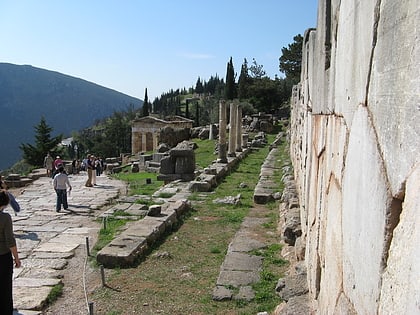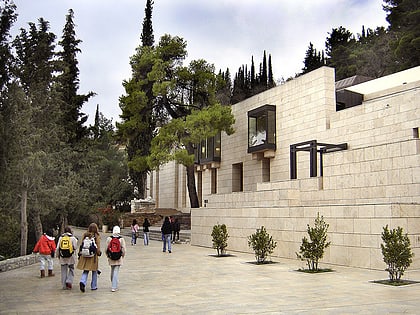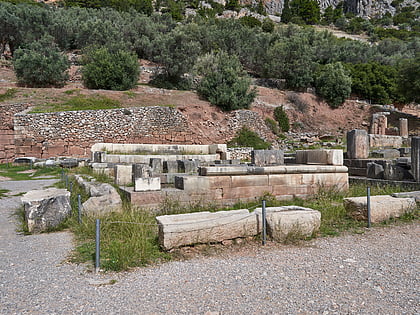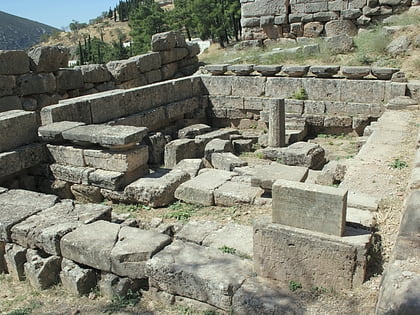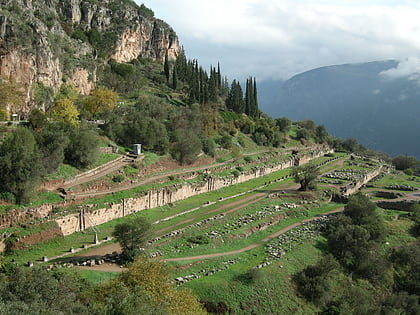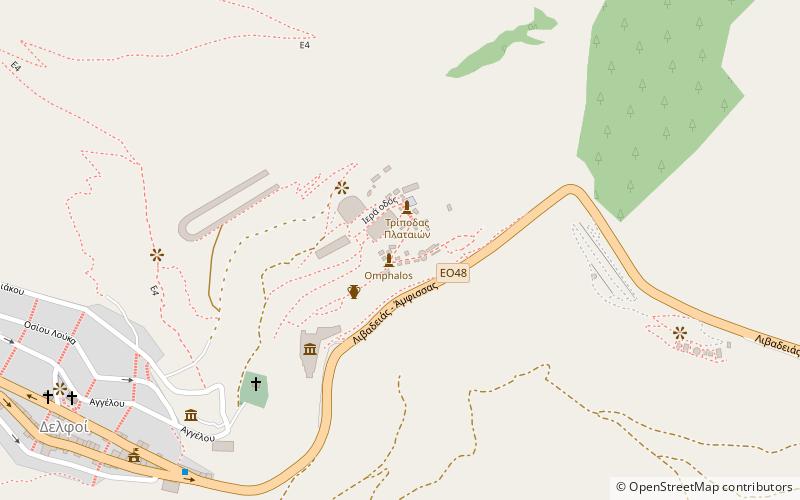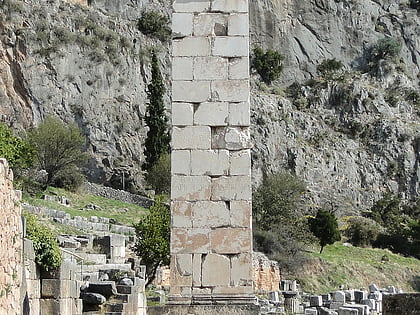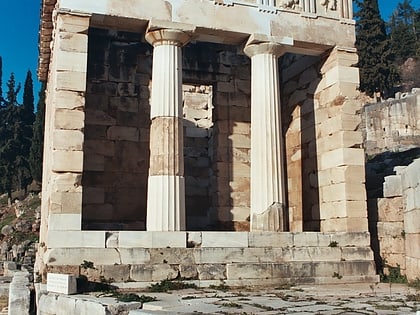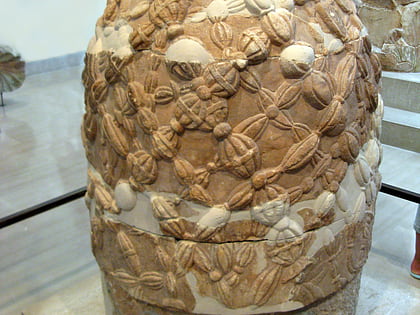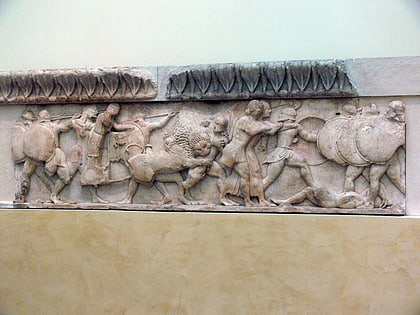Stoa of the Athenians, Delphi
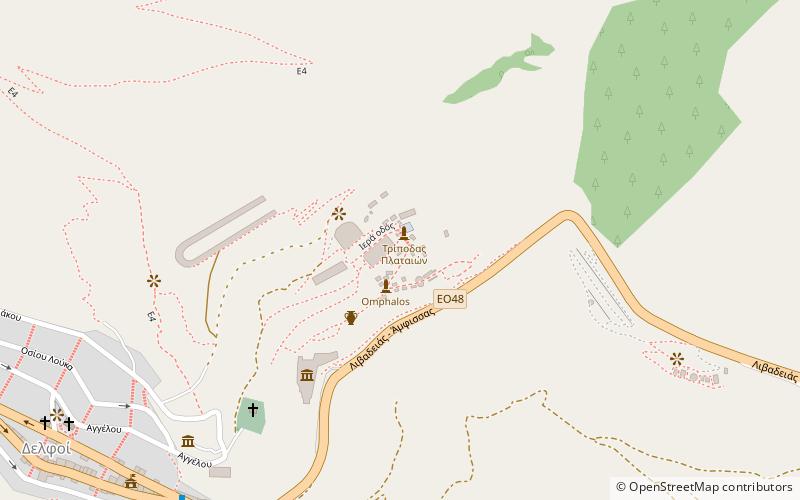
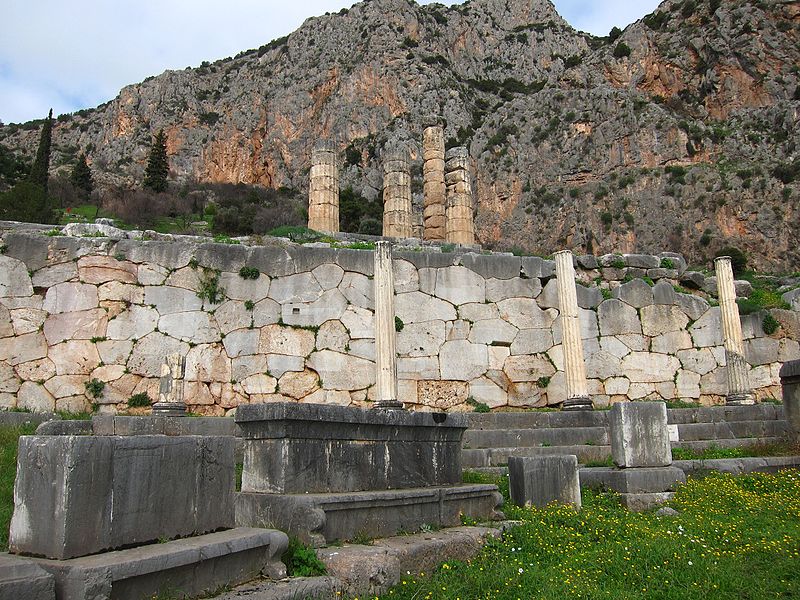
Facts and practical information
Nestled in the sacred precinct of Delphi, Greece, the Stoa of the Athenians stands as a testament to the architectural and cultural significance of the ancient world. This archaeological site, which once showcased the might and piety of Athens, is a captivating destination for history enthusiasts and travelers alike.
The Stoa of the Athenians is a long, narrow building that dates back to the early 5th century BCE. It was constructed by the Athenians to commemorate their naval victories, particularly the Battle of Salamis, and to house the trophies and offerings made to the god Apollo. The structure, made of marble and limestone, is supported by elegant Doric columns that once lined the pathway leading up to the Temple of Apollo — the centerpiece of the Delphic oracle.
Although much of the stoa has not survived the ravages of time, the remains provide a glimpse into the grandeur of its original design. The building's prime location within the sanctuary of Delphi underscores the importance of the Athenians' contributions to the pan-Hellenic religious site and their desire to display their maritime prowess and divine favor.
Visitors to Delphi today can still walk among the ruins of the Stoa of the Athenians, envisioning the ancient ceremonies and the throngs of pilgrims who once gathered here. The site offers a profound connection to the past, allowing one to stand where the ancients stood and to marvel at the achievements of classical civilization.
Delphi
Stoa of the Athenians – popular in the area (distance from the attraction)
Nearby attractions include: Delphi Archaeological Museum, Treasury of the Massaliots, Sicyonian Treasury, Palaestra at Delphi.
